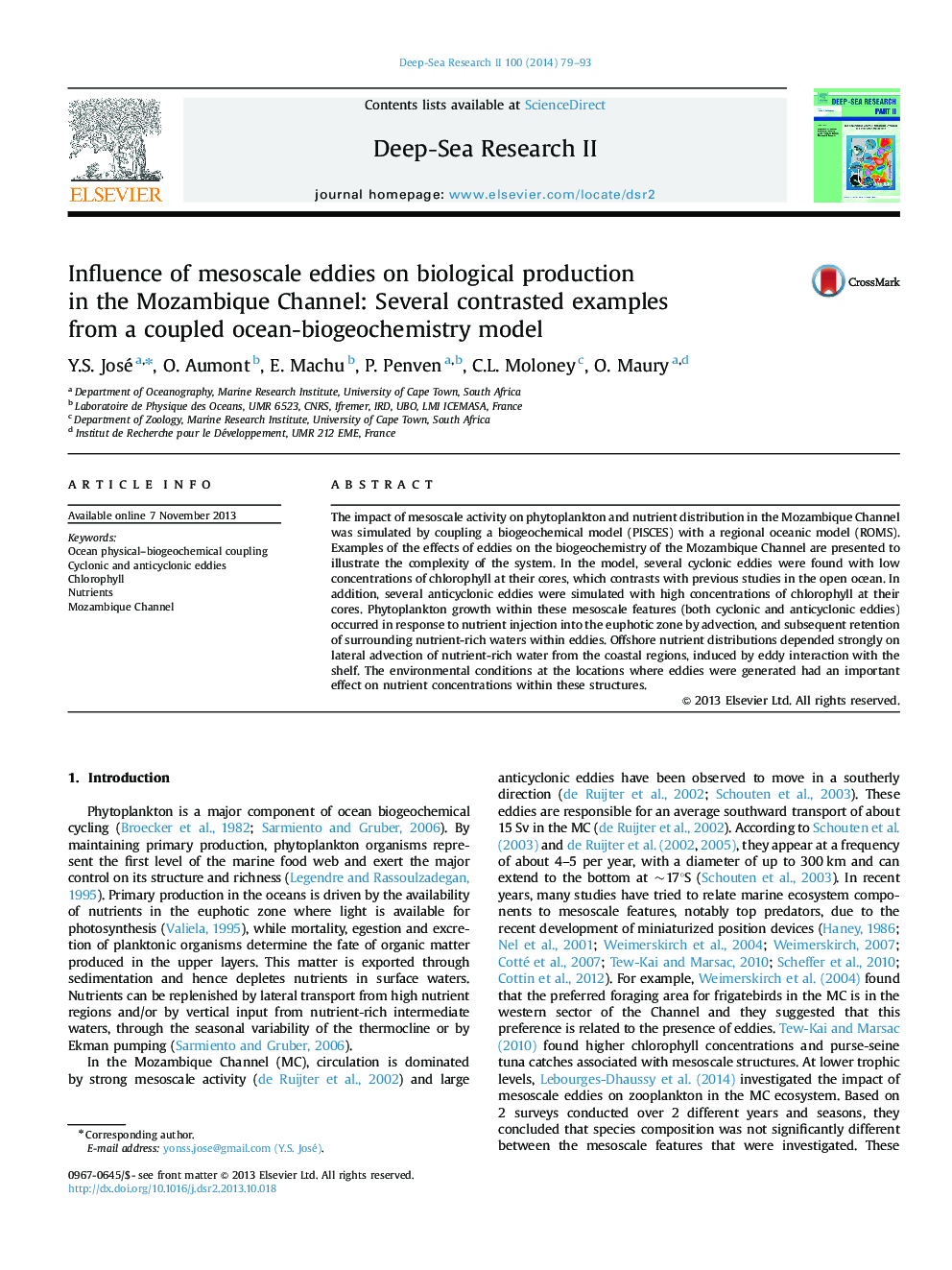| Article ID | Journal | Published Year | Pages | File Type |
|---|---|---|---|---|
| 4536429 | Deep Sea Research Part II: Topical Studies in Oceanography | 2014 | 15 Pages |
The impact of mesoscale activity on phytoplankton and nutrient distribution in the Mozambique Channel was simulated by coupling a biogeochemical model (PISCES) with a regional oceanic model (ROMS). Examples of the effects of eddies on the biogeochemistry of the Mozambique Channel are presented to illustrate the complexity of the system. In the model, several cyclonic eddies were found with low concentrations of chlorophyll at their cores, which contrasts with previous studies in the open ocean. In addition, several anticyclonic eddies were simulated with high concentrations of chlorophyll at their cores. Phytoplankton growth within these mesoscale features (both cyclonic and anticyclonic eddies) occurred in response to nutrient injection into the euphotic zone by advection, and subsequent retention of surrounding nutrient-rich waters within eddies. Offshore nutrient distributions depended strongly on lateral advection of nutrient-rich water from the coastal regions, induced by eddy interaction with the shelf. The environmental conditions at the locations where eddies were generated had an important effect on nutrient concentrations within these structures.
